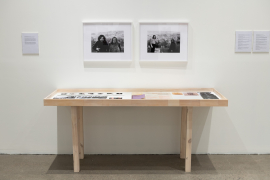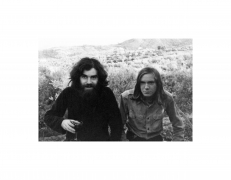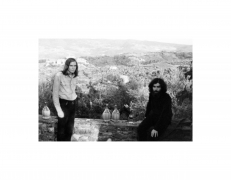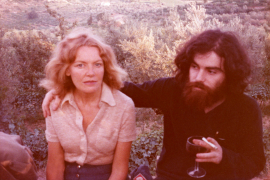Portrait de deux révolutionnaires n° 2, 1972
Exhibition view of Françoise Sullivan. The 1970s, 2021, Galerie de l’UQAM
Photo: Paul Litherland
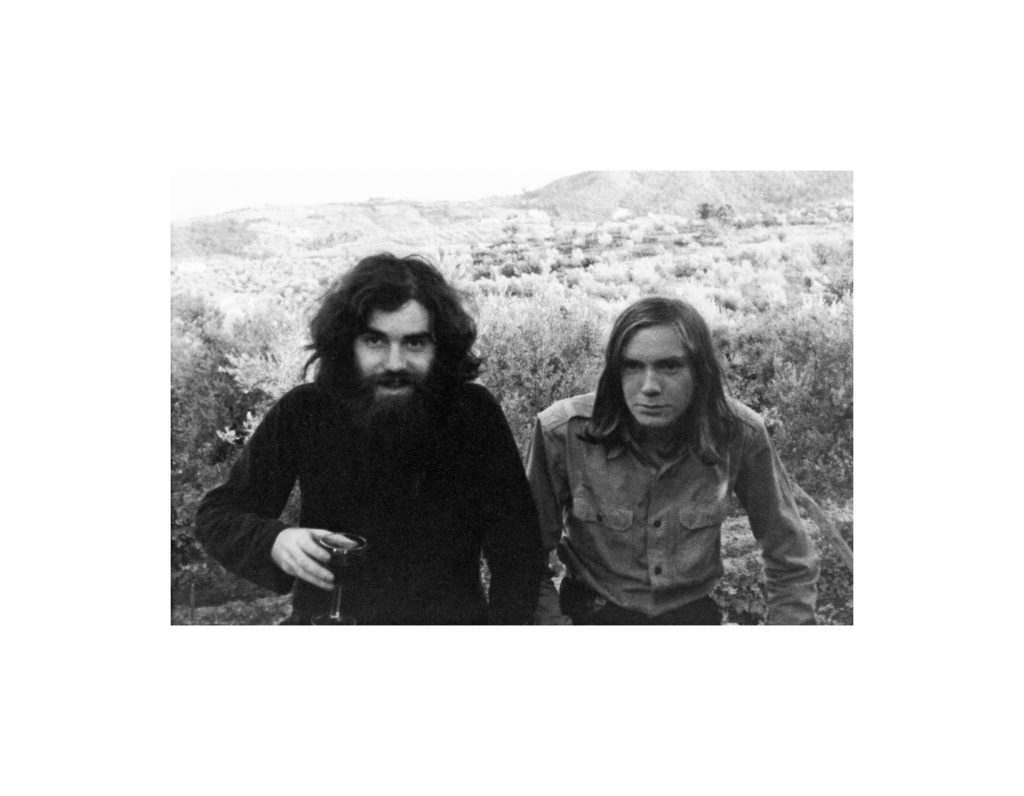
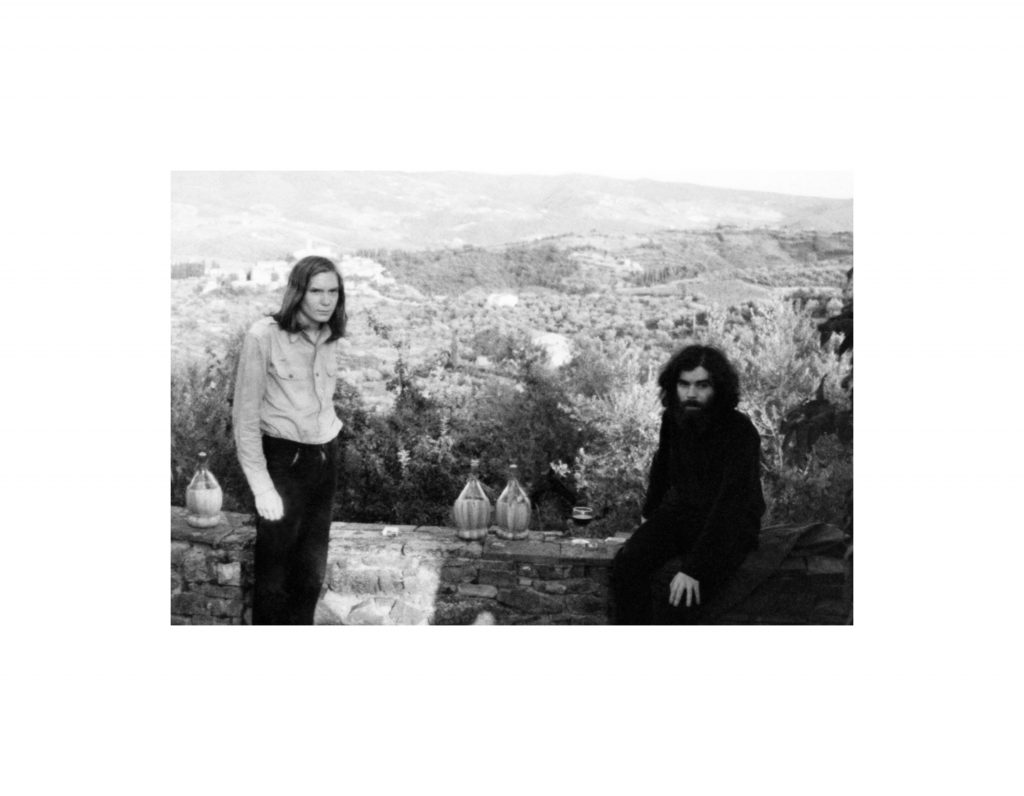
2 black and white digital prints produced in 2021 from the original color photographs
Collection d’œuvres d’art de l’Université du Québec à Montréal
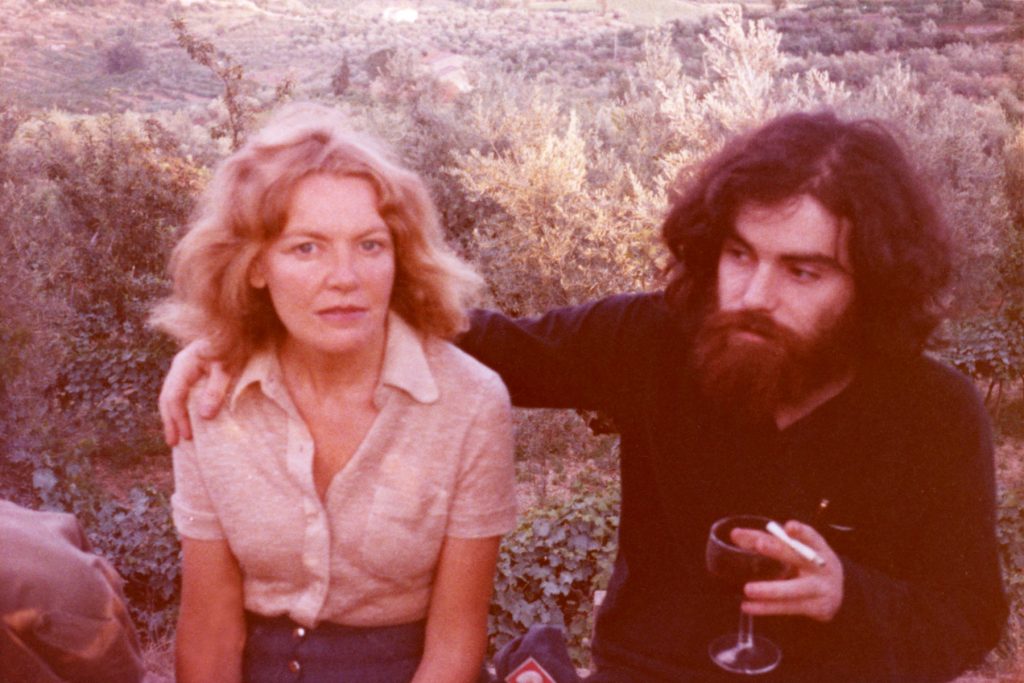
Françoise Sullivan and Gianfranco Sanguinetti, La pieve di San Cresci, Greve in Chianti, summer of 1972
Photo: Geoffrey Ewen
Courtesy of Françoise Sullivan and Gianfranco Sanguinetti
Françoise Sullivan’s personal papers
Portrait de deux révolutionnaires n° 2, 1972
2 black and white digital prints produced in 2021 from the original color photographs
47.4 × 61 cm (each)
Collection d’œuvres d’art de l’Université du Québec à Montréal
On several occasions during the 1970s, Françoise Sullivan spent time in Italy in order to saturate herself with the art currents that were developing around arte povera and conceptual art. In Rome, she met prominent artists and intellectuals, among them Gianfranco Sanguinetti, the famous revolutionary theoretician who was a member of the Italian section of the Internationale situationniste founded in Paris by Guy Debord. In June 1972, she was at Greve in Chianti in the company of her sons, who were joined by Sanguinetti, Debord and his wife, Alice Becker-Ho. Sullivan took photographs during this sojourn, including many of her second son, Geoffrey Ewen, then seventeen, in the company of Sanguinetti. Portrait de deux révolutionnaires n° 2 was made in two versions, the first of which has not been located. This second version was created from original documents found in the artist’s archive and conveys the rebel force that emanates from the two protagonists.
